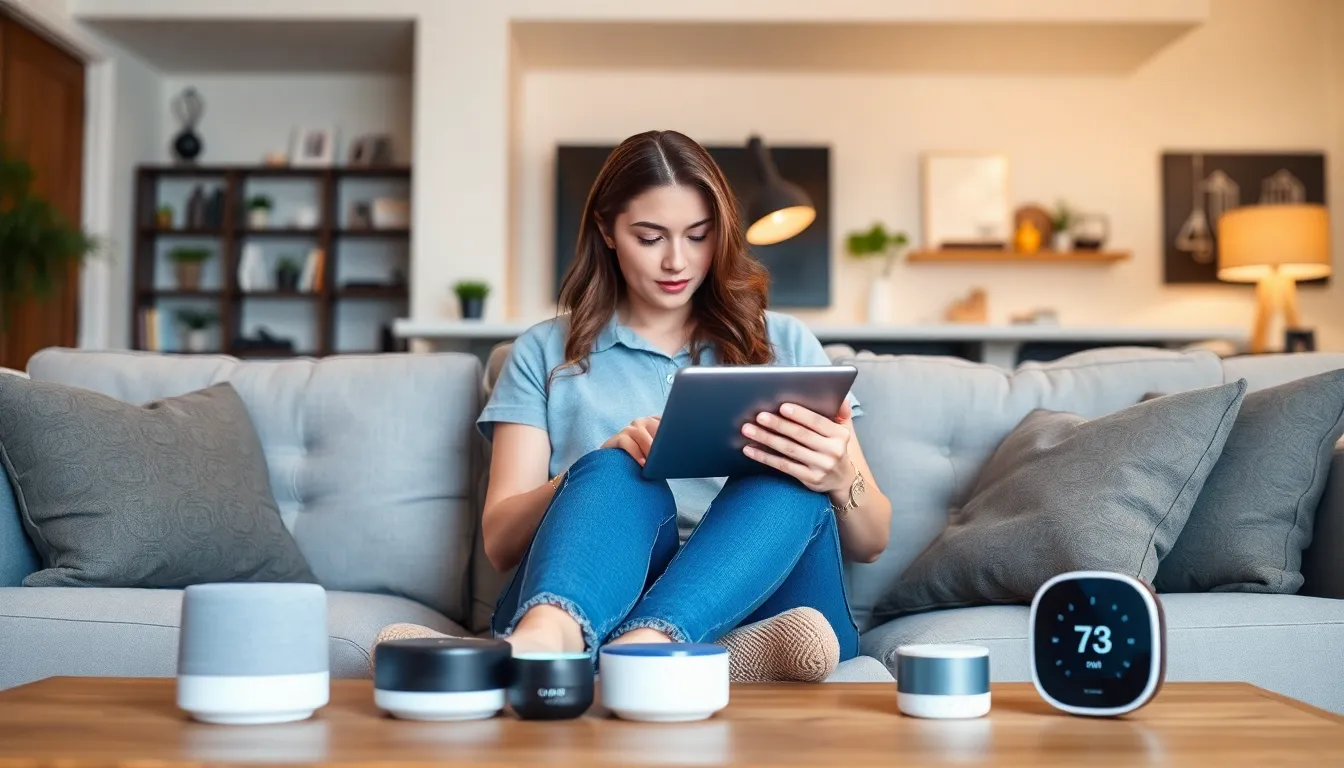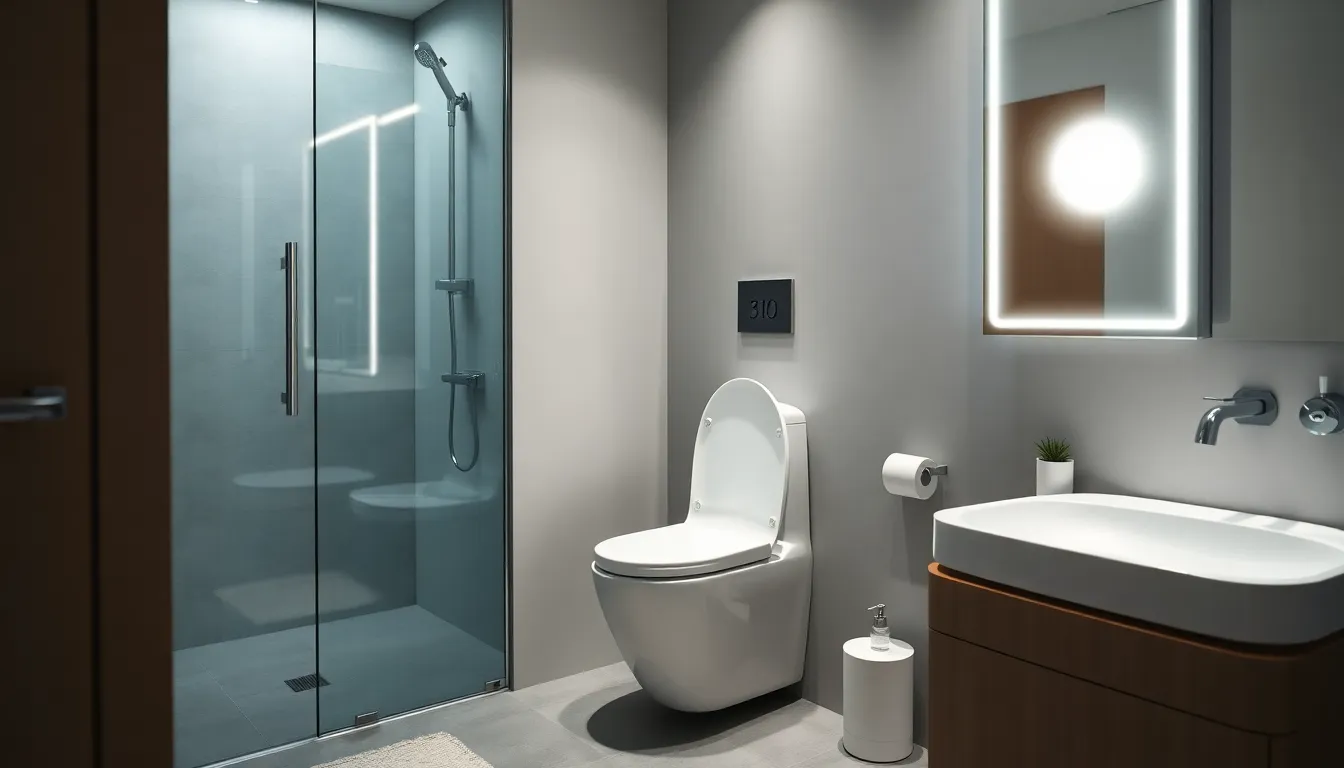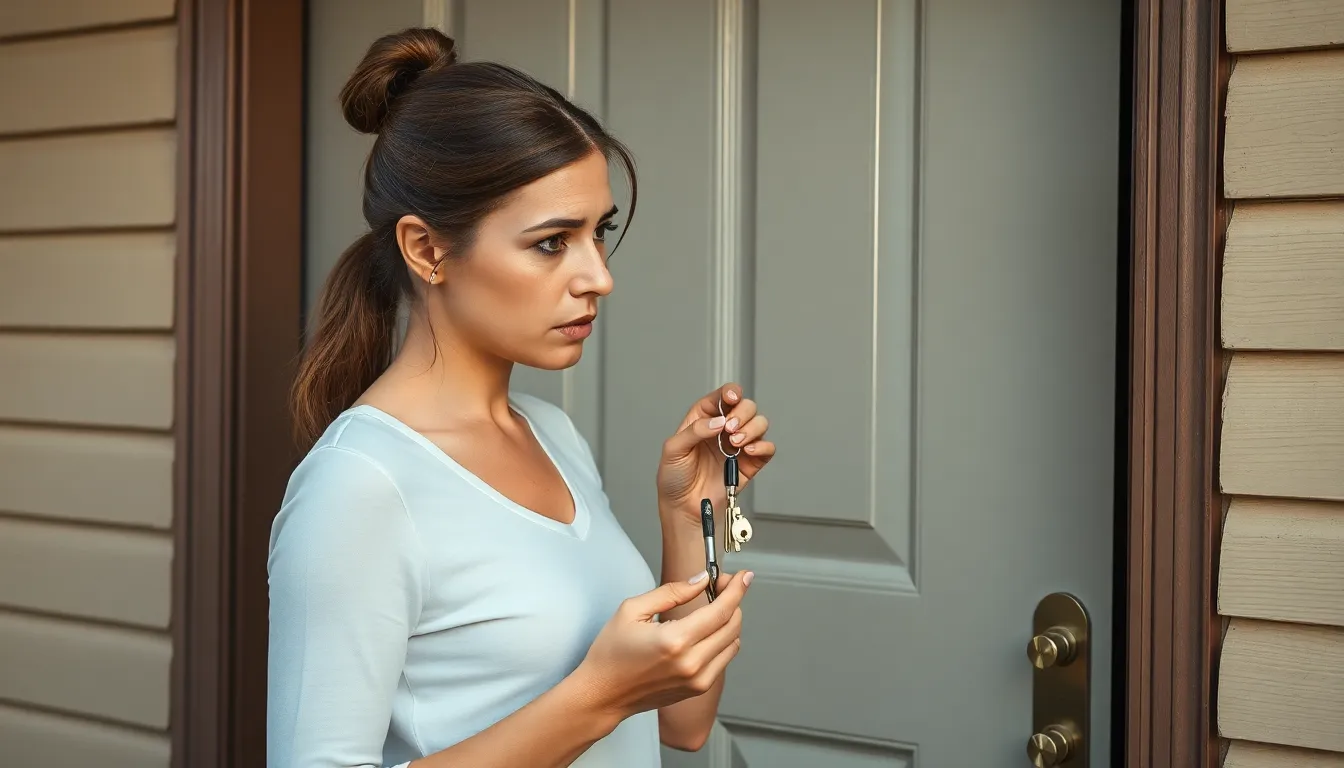Table of Contents
ToggleIn a world where your toaster can chat with your fridge, keeping your smart home devices updated is more crucial than ever. Imagine your light bulbs throwing a disco party while your thermostat decides to take a vacation—nobody wants that chaos! Regular updates not only keep your gadgets running smoothly but also protect your home from pesky cyber intruders.
What Are Smart Home Device Updates?
Smart home device updates refer to software enhancements that improve performance and security. These updates can include new features, bug fixes, and patches that protect devices from vulnerabilities. Manufacturers regularly release these updates to ensure devices operate smoothly.
Outdated devices can lead to a range of issues. For example, a smart thermostat that doesn’t receive updates may incorrectly regulate home temperatures. Similarly, a security camera lacking updates may become susceptible to hacking attempts. Routine updates help mitigate these risks, safeguarding both devices and the users’ privacy.
Users often receive notifications for available updates through their smart home app or device interface. Upon approval, the updates install automatically or require user intervention, depending on the device setting. Regularly checking for updates ensures devices have the latest capabilities and security enhancements.
Furthermore, updates can introduce new functionalities, such as compatibility with additional smart home ecosystems. These enhancements streamline user experience and enable greater control over interconnected devices. Utilizing compatible devices can create a more efficient smart home environment.
Prioritizing smart home device updates remains crucial for maintaining device functionality and security. Smart home technology requires consistent attention to keep it operating effectively, which includes staying informed about updates. Smart home owners who actively manage device updates enjoy a more secure and seamless experience.
Importance of Regular Updates
Regular updates for smart home devices ensure optimal performance and security. These updates play a critical role in keeping systems functional and protecting them from threats.
Security Enhancements
Security enhancements provide vital protections against emerging cyber threats. Malware and other attacks target outdated software, creating vulnerabilities that hackers exploit. Each update includes patches that address these vulnerabilities, making devices safer. A smart home security camera with recent updates can defend against hackers, while an outdated model may expose users to significant risks. It’s crucial for users to prioritize these updates to maintain a secure environment. The frequency of attack attempts increases every day, emphasizing the importance of immediate software upgrades.
Performance Improvements
Performance improvements come from regular software updates that enhance device functionality. Each update often delivers new features or fixes existing bugs, significantly improving user experience. For instance, an updated smart thermostat can more accurately calibrate temperatures, ensuring comfort throughout the home. Moreover, updates often boost compatibility with other devices, allowing for smoother operation within the smart home ecosystem. As devices become more integrated, users enjoy a seamless experience that only regular updates can provide. Device owners must keep up with these updates to unlock full capabilities and maximize performance.
Types of Smart Home Device Updates
Smart home devices require various types of updates to function effectively and securely. Understanding these updates helps users maintain device performance and enhance capabilities.
Firmware Updates
Firmware updates involve modifications to the low-level software that controls hardware. These updates fix critical bugs and address security vulnerabilities. Manufacturers provide firmware updates to ensure devices operate seamlessly with new features and improvements. An updated firmware version can stabilize device performance significantly. Users typically receive prompts when firmware updates are available. Installing these updates safeguards against potential hacking attempts and optimizes device functions.
Software Updates
Software updates enhance the applications running on smart home devices, facilitating new features and improving usability. These updates can streamline user interfaces or create integrations with other smart home systems. Regular software updates often deliver performance optimizations, ensuring devices function at their best. With these improvements, user experience becomes smoother and more efficient. Notifications regarding available software updates are common, requiring user approval for installation. Successful software updates protect against emerging threats, offering peace of mind to users by keeping their devices secure.
How to Update Your Smart Home Devices
Keeping smart home devices updated ensures optimal performance and security. Users can choose between automatic or manual updates.
Automatic Updates
Automatic updates simplify the process of keeping devices current. Many smart home devices come equipped with this feature, enabling seamless software enhancements without user intervention. When enabled, devices automatically download and install updates as soon as they become available. Notifications alert users to completed updates, minimizing any disruption. For users prioritizing ease of use, this option ensures devices stay secure and functional. Most manufacturers recommend enabling this feature to safeguard against potential vulnerabilities.
Manual Updates
Manual updates offer a hands-on approach to keeping devices in top shape. Users access their device settings to check for available updates. This process allows greater control over what gets installed. Typically, a device will prompt users when updates are ready, providing the option to delay or proceed. Users choosing this method gain the ability to research specific changes before installation. Following manufacturer instructions guarantees successful updates. Prioritizing this method ensures optimal device performance and security by allowing users to install updates at their convenience.
Common Challenges with Smart Home Device Updates
Updating smart home devices presents various challenges. Users often encounter compatibility issues when device updates disrupt synchronization with other gadgets. Inconsistent update schedules can leave some devices outdated longer than necessary, leading to security vulnerabilities.
Connectivity problems frequently arise during the update process. Users may experience interruptions in Wi-Fi or Bluetooth, which prevent successful updates. Device manufacturers recommend a stable connection, yet many users overlook this requirement before initiating updates.
Notification overload affects user awareness, as devices bombard individuals with multiple alerts about available updates. Users may feel overwhelmed by the frequency of these notifications, causing them to ignore critical updates that protect against security threats.
Firmware updates can be particularly daunting. Users frequently worry about the potential for bugs introduced by new firmware, leading to limited functionality or performance issues. Many may hesitate to proceed with updates because of these concerns, prioritizing device stability over security enhancements.
Another challenge involves the update process itself. Some smart home devices require manual intervention, which many users find time-consuming. This is counterproductive as manufacturers typically recommend automatic updates for seamless security maintenance and functionality.
User understanding also plays a crucial role in successfully updating devices. Users often lack awareness of the importance of updates, leading to neglect. Education about the risks associated with outdated software is essential for promoting proactive behavior.
Privacy concerns continue to emerge around data collection during updates. Many users express discomfort with potential data sharing, which can deter them from installing important updates. Manufacturers need to address these issues to build trust and encourage users to prioritize device safety.
Conclusion
Staying on top of smart home device updates is essential for a secure and efficient home. Regular updates not only enhance performance but also protect against emerging cyber threats. Users must prioritize these updates to enjoy the full capabilities of their devices while minimizing risks.
While challenges like compatibility issues and notification overload can arise, the benefits of keeping devices updated far outweigh the drawbacks. Embracing automatic updates can simplify the process and ensure devices remain functional and secure. By understanding the importance of updates and addressing concerns, users can create a smarter home environment that operates seamlessly and safely.








